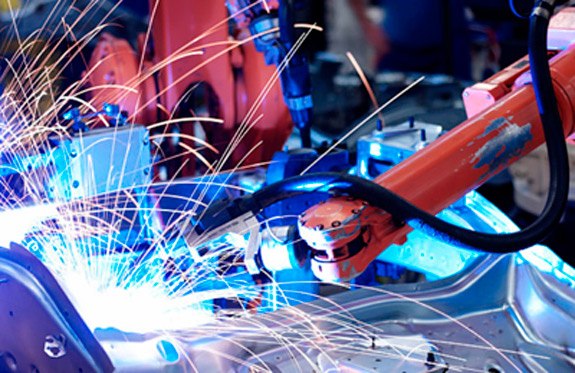Inside the cylinders of a car engine, there are many water channels used for circulating cooling water, which are connected to a radiator (commonly known as a water tank) placed at the front of the car, forming a large water circulation system. At the outlet of the engine's upper part, a water pump is installed, which is driven by a fan belt. The hot water in the engine cylinder water channels is extracted and replaced with cold water. There is also a thermostat next to the water pump. When the car is just started (cold), the cooling water only circulates inside the engine and does not pass through the water tank (commonly known as small circulation). When the engine temperature reaches above 95℃, the thermostat opens and the hot water in the engine is drawn into the water tank. When the car is moving, cool air blows over the water tank and takes away the heat.
The engine coolant water pump is the power source for the circulating cooling water in the cooling system. The water tank stores the cooling water used for engine cooling (the engine cooling system is divided into large and small circulation with car engine cooling system parts). The water tank and intercooler are located in the front of the engine in the car. Cars with intercoolers generally also have a boost pump (referred to as intercooler boost), which mainly lowers the intake temperature of the engine, thereby increasing the engine output power.
The pulley drives the bearing and impeller of the engine cooling water pump to rotate. The antifreeze in the water pump is driven to rotate by the impeller, and it is thrown to the edge of the water pump housing under the effect of centrifugal force, generating the necessary pressure, and then flows out from the outlet or water pipe. As the antifreeze is thrown out, the pressure at the center of the impeller drops, and the antifreeze in the water tank is sucked into the impeller under the pressure difference between the water pump inlet and the center of the impeller, realizing the reciprocating circulation of the antifreeze.
The bearing that supports the pump shaft is lubricated with grease, which needs to avoid antifreeze entering the grease and causing emulsification, while also avoiding oil leakage. Sealing measures to prevent water pump leakage include water seals and gaskets. The water seal dynamic seal ring and the shaft are installed between the impeller and the bearing by interference fit, and the water seal static seal seat is tightly pressed on the water pump housing, which can achieve the purpose of sealing and antifreeze.
The water pump housing of the engine coolant water pump is connected to the engine through a gasket and supports the moving parts such as bearings. There is also a drain hole on the water pump housing, which is located between the water seal and the bearing. Once the antifreeze leaks through the water seal, it can be discharged from the drain hole, preventing the antifreeze from entering the bearing cavity and damaging the lubrication of the bearing and corroding the components. If the antifreeze still leaks after the engine is shut down, it indicates that the water seal has been damaged.
It has the advantages of high efficiency, energy saving, and smooth operation, and the shaft seal adopts wear-resistant mechanical seal, with a usage temperature of ≤100℃ and a working pressure of ≤1.6MPa (16kg/cm³). Flow rate: 5-300m³/h, head: 5-250m, speed 2900r/min. The engine coolant water pump must be maintained during use to extend its service life.
